Confessions of a Sign Guy: Meet Paul Lachapelle
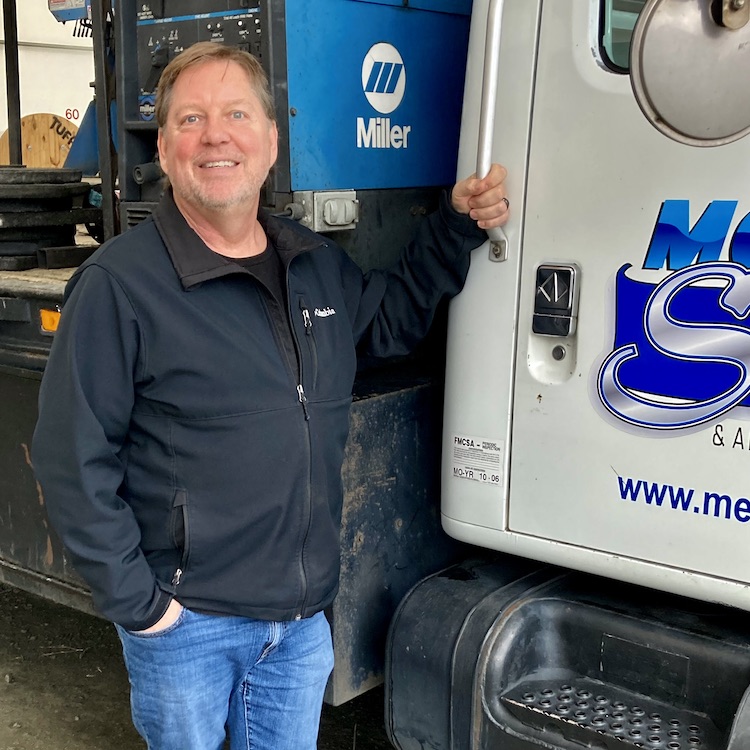
“I’m unique in the sign industry in that most people who get into the business do so as fabricators or installers. Not so many have learned the whole gamut, but I worked for people who gave me the opportunity…and I wanted to know it all.”
- Paul LachapelleIf you were to make the case that great sign makers are born, not made, Paul Lachapelle would serve as “Exhibit A.” His destiny might have seemed obvious from his childhood love of neon, but whatever the combination of nature and nurture played in determining his career path, the insurmountable fact is this: Paul Lachapelle is a stone cold sign guy.

Paul was born in North Bay, Ontario, Canada. “It’s primarily an Air Force town — railroad and Air Force. As a matter of fact, it was the headquarters for an underground NORAD facility. You could see the entrance from my neighborhood — it was called “The Hole.” North Bay was also what Paul describes as “a big time hockey town.”
“The entire culture rotated around hockey, and that’s what I spent all of my weekends doing — either playing hockey, practicing hockey, doing skate patrol for public safety, or running the time clock for hockey games. We were a big time hockey family. My older brother was a referee, and one of my cousins was in the NHL. He played for the Calgary Flames. It was a cool place to grow up.”
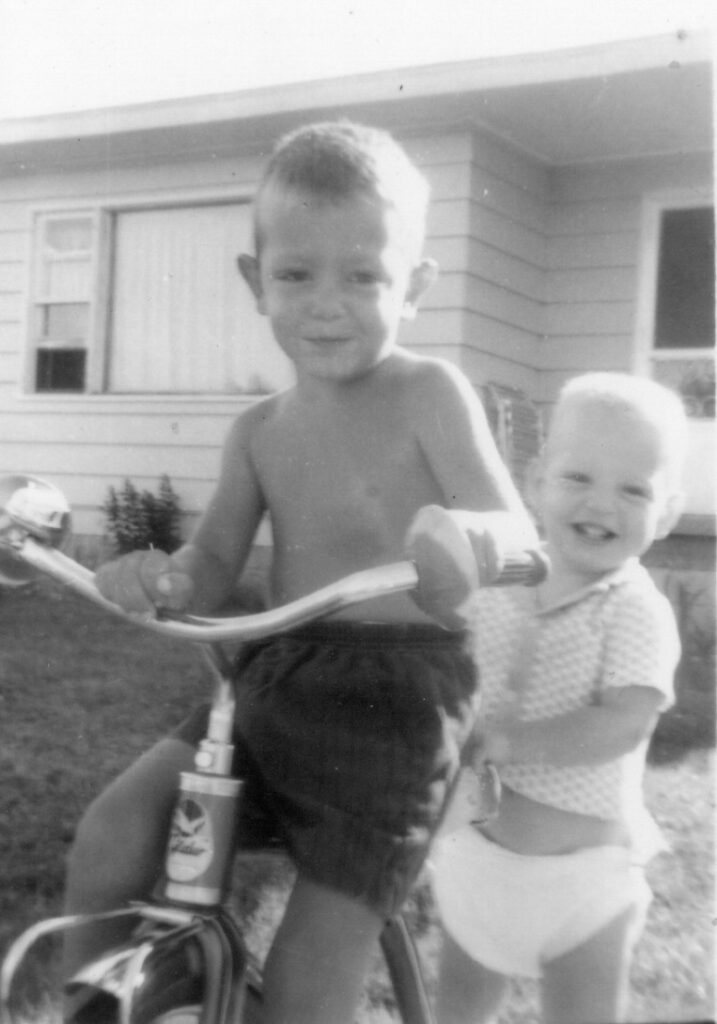
Paul’s parents are both Canadian citizens, and his father worked for a company that manufactured and distributed diamond drill bits for the mining industry. “They had a Howard Hughes’ patent that they had put their own spin on. I’d been in the plant where they made the bits, and they had metallurgists from all over the world. There were a lot of nationalities there, and people with very fine skills and formulae.” Paul’s esteem for this diverse mix of expertise and background proved to be another harbinger of his future career — as did a 9th grade aptitude test.
“We had to do an aptitude test to map out what you wanted to do based on your results. My friends and I filled ours out like complete morons — one of my friends qualified as a matchstick dipper. We got in trouble for it and had to do it over again. When we filled it out for real I indicated that I wanted to work outside, but I also wanted to work inside. I wanted to make things with my hands, but I also wanted to use my head. When my guidance counselor met with me he said there really wasn’t anything that would fit my criteria. It just so happens that the sign industry fit it perfectly.”
Paul’s dad had an opportunity to open a company branch in Denver, which is how Paul found himself in Colorado following 9th grade. Paul remembers the transition as “culture shock.” “It was this social thing where you had to be labeled and put into a slot, which I didn’t like. People kept asking, “Which one of those are you?,” and I would say, “Well, I’m none of those things, so I guess I’m a free agent.” As it turns out, free agency is something of a theme throughout Paul’s life.

Paul’s family settled in Lakewood, Colorado, “on Green Mountain, up against the foothills. It took me a while to get used to it. It was a different climate, different geography, and hockey was almost non-existent.” Thanks to Paul and his family, however, the latter situation soon changed.
“My brother started a hockey organization that really grew. We had a team called the Colorado Flames that were a farm team for Calgary. My brother would referee those games and I would get free tickets. I had to beg my friends to go. We’d get eight tickets, I’d bring two of my buddies and we’d sell the rest for beer money. After one game my friends were addicted. Watching hockey on TV is one thing, but when you’re there it’s a whole other thing. By the time I moved away from Denver there was a hockey program.”
Around the time of Paul’s graduation from high school, his parents had moved to Vancouver, B.C. They of course wanted their son to join them, but Paul had other plans. He also had a girlfriend. His childhood ambition had been to become a doctor, and his parents were planning to fund his education toward that end. “Free agent” that he was, however, Paul went a different direction. With the help of a friend’s dad, he signed on as a roughneck on a drill rig “in the middle of nowhere.”
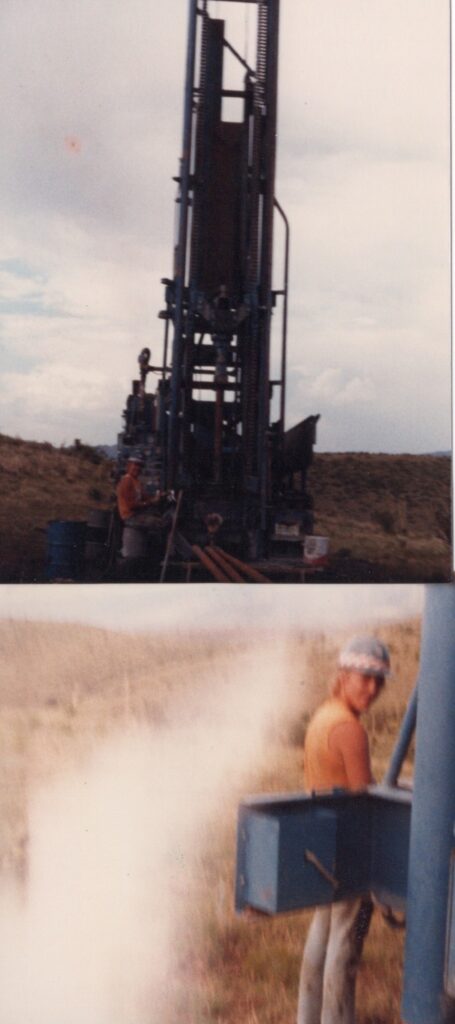
“The rig was mobile, so we drilled for coal in a lot of places around New Mexico. Wherever we drilled it was really hard. It took a long time to go 20 feet…so there was a lot of time to play frisbee and throw a football.” During a three-week drilling halt, Paul’s best friend’s dad suggested that he help out a Denver sign company acquaintance. “And that,” says Paul, “is when I decided what I wanted to do.”
Looking back at his response to walking into his first sign shop, Paul’s immediate affinity makes perfect sense to him so many years later. “I liked building cool things, and the town I grew up in had a lot of neon signs. It had three old traditional movie theaters with the big marquees with all the scintillating light bulbs underneath them with massive amounts of neon. My parents would drop us off to see the matinee, and waiting outside the theater I would notice all the details of these very ornate and cool signs. I really began to appreciate them, and how the tubes were bent. Under the theater marquees there were so many lights that you would feel warm, even when it was freezing cold. So I started to appreciate neon signs before I even got into them. The first time I walked into a sign shop I thought, ‘I want to learn how to do this!’”
The company Paul went to work for in 1983 was Mile High Signs in Denver. “The guys I was working for were two English brothers, and they gave me all the opportunity I wanted. I was 20 years old. I started out on day one as a ‘shop boy’ doing clean up, but after a couple of hours my boss asked me if I could do a particular task if he showed me how, and I ended up doing that for two days. So then he would show me something else. Within two weeks I was a fabricator. I had a very interesting man that I worked with for a year. His name was Bill, and he was an old school sign builder. He was a character unlike anyone I’d ever met. He was barely clinging to reality, and I loved him. I also learned a lot of great skills.”
When Paul’s mentor moved to Las Vegas (a great place for a sign guy) a year later, Mile High Signs offered him the vacant position. “It came with a big fat raise, and I could hire a helper of my own. The first sign they gave me to build was before computer renderings. It was a hand painted blueprint, and since there was only one of these it didn’t get to go into the shop. It was the one that the customer would see. I was overwhelmed that they would trust me to build this — it was for a sports club called Iron Works. It was in the heart of the industrial part of Denver with a tower and really cool brick building. It was an all-neon sign, and I learned a lot building it.” One day, after having watched install crews gearing up for a job and thinking that he’d like to learn that part of the business, Paul’s boss asked him to come along. “He taught me how to run the crane and put up these big, beautiful signs.”
In the summer of 1988, Paul and his girlfriend embarked on “a little adventure.” They took the train from Denver to Vancouver and spent two weeks discovering the Pacific Northwest. “I realized that this was so much nicer than where I was living. We found a big old farmhouse on a hundred acres up near Blaine, and I found a job without hardly looking. I had wanted to put down roots someplace other than Denver, so I came up with a two-year timeline with my girlfriend. But once we’d found the house and a job we decided not to wait. I built my own motocross track on the property.”
Paul’s first gig in Washington proved a disappointment, and after a couple of months he journeyed down to Mount Vernon where he was hired in 1989 by Martin Boer, who along with his wife Tonnie had succeeded Martin’s father-in-law, John Meyer, as the owners of Meyer Sign. “I learned a lot from Martin, who was impressed with my skill set. He taught me how to estimate sign jobs.”

What followed was a two-year stint at Meyer Sign, during which Paul became good friends with Martin, current owner Ken Hitt, and the late lamented Gregg Collins. Paul not only did estimates, but also permit drawings and submittals. “I did all the channel letter installs by myself because I didn’t want anyone else to slow me down. I would also do service work, so I was all over the place.”
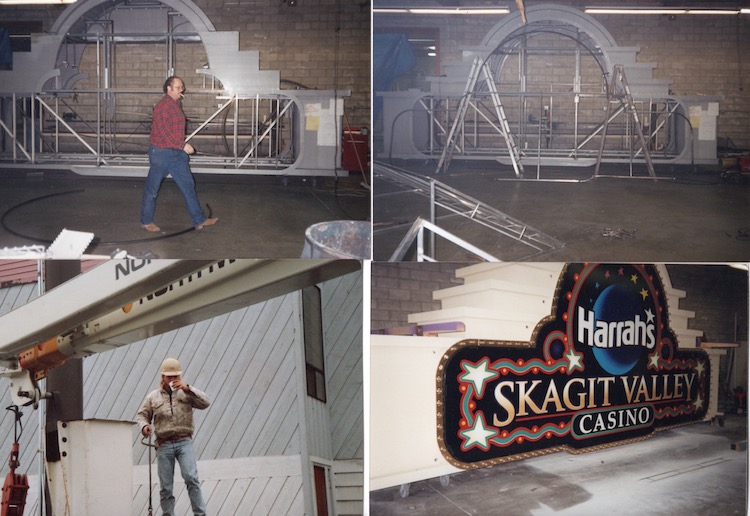
After a couple of years, Paul’s commute proved too wearing, and he signed on with an awning company whose owner had larger ambitions. Paul ran the production department and with the addition of a shop and a boom truck he helped the owner expand into sign building. “The guy was tough to work for, but the jobs pushed me way beyond anything I had thought I was capable of doing. We did projects as far away as Colorado. By the time I left that company it had 50 people, and we did some really cool casino jobs.”
Five years passed, and Paul’s “free agent” gene prompted him to start his own wholesale manufacture business. “I built for sign companies that had sold more than they could take on in-house. I did a little marketing in Seattle and that’s all it took. Every morning when I would come in there would be faxes for jobs waiting for me, and my phone was ringing off the hook. I had the luxury of picking and choosing which jobs were in my wheelhouse.”
One of Paul’s customers was Signs Plus in Bellingham, which at the time was “a little commercial shop.” The owner and Paul got to know each other, and they merged in 2000 with Paul taking a 20 percent ownership position in the company. “It was a good fit,” says Paul. “They possessed all the skills on the front end with sales and organization stuff, which was where I struggled the most, and I was running the back end. We sold the company in 2005. We thought we would transition out of it after a year or two, but the new owner didn’t really want to get involved in the daily operations, so I stuck around much longer than I had planned to as the operations manager. I did purchasing, CAD drawings, and taught folks the skills I had learned.”
Throughout the years, Paul remained friends with Ken Hitt and Gregg Collins. “I would pop in from time to time to see them, and Gregg would always provide some good comic relief. I knew Gregg well enough that I always relished the time we spent together. He was such a kick in the pants, and he lit up any room. You just never knew what he was going to say.”
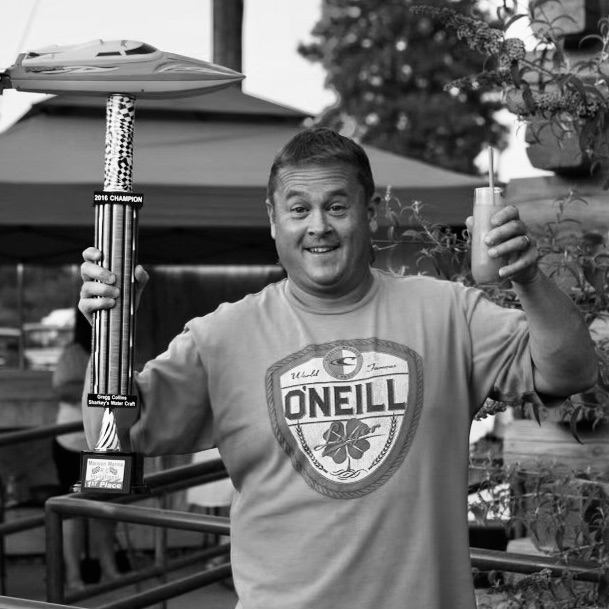
Just as it did to the Meyer Sign family and so many others in our community, Gregg’s passing came as a shock to Paul. “I knew how close he and Ken were, and how much of a hole his absence would leave for the business. Ken and I started having lunch about once a month, and as we were talking it just seemed like it would be a good fit for me to join him, especially since I had recently retired from Signs Plus. I think Gregg would have approved.”
Paul officially joined Meyer Sign in February of this year. Coming back to the company he had worked for so many years earlier, he found some significant changes beyond the ownership transition from Martin to Ken. “Meyer was old school when I was there. Everything was still made from angle iron frame and sheetmetal skin with fluorescent lighting. Nowadays in the shop they’ve got pipe benders, a press break, a massive power shear — and in the other shop they’ve got the computerized channel letter machine and the router table. They also have much nicer trucks — ones where two guys can get into the basket and control it remotely. Before, it was a fiberglass bucket that one guy went up in and the other controlled from below. From an installer’s point of view, this was a game changer. We used to have a boom truck with a rack full of ladders, so you had to climb ladders to get where you needed to go. Being a sign installer is a tough job, but believe me, it’s a lot easier to do now than it used to be.”
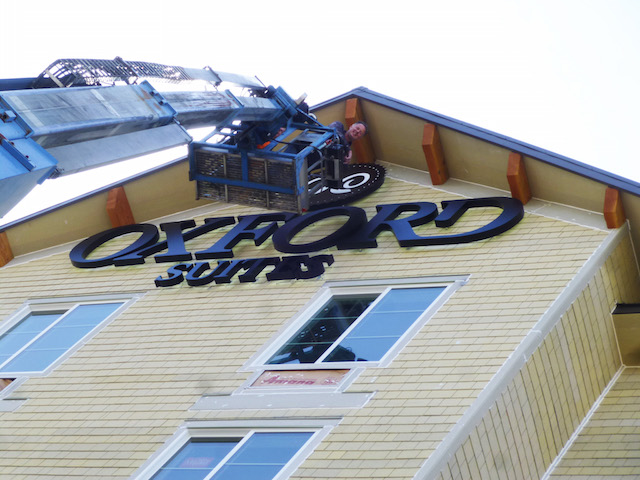

Paul Lachapelle has seen some monumental changes in the sign industry as a whole, starting with the degree of computerization that now characterizes its operations. “When I first came to Meyer Sig there wasn’t a single computer in the entire company — not even in accounting.” But one of the most significant changes Paul has witnessed has been the increasing use of LED and the concomitant decline of neon.
“I learned to bend glass back in the day. I used to stay late at work to be tutored by a guy who was happy to teach me. It’s something that I did long enough to understand that it wasn’t something I wanted to do every day — stand in the same spot forming this stuff one at a time. I’ve installed miles of neon. Today, LED has probably taken over 95 percent of the jobs that neon used to do. With LED, the product itself is more expensive, but the labor to install it is so much less, and if you buy the right product they are very robust — they’ll last for a very long time.”
Needless to say, there is a lot that Paul Lachapelle brings to the Meyer Sign party — not the least of which is decades of sign making experience across every facet of this multi-faceted industry. This experience includes not only the tangibles of design, fabrication, and installation of signage, but the less tangible benefits of relationship building with customers and suppliers. In particular, it has been the latter relationships that Paul credits with his success in the sign business. “One of the advantages of having been in this industry for so long is the relationships I’ve established with suppliers and their reps, who we treat as our partners in success. These guys are integral to what we do, and if they aren’t bringing their best to us, we can’t do our best.”
But perhaps more than anything, what makes Paul Lachapelle a sign guy is that his love for the business has never diminished from his childhood days of seeking warmth in the neon fold of North Bay’s cinema palaces, and from the moment he first stepped into an honest to goodness sign shop.
“It’s been a ride. If you walk into a modern sign shop you will not find any other industry that offers such a wide array of products under one roof — and I’m talking anything from stickers this big to a 100-foot tall sign and everything in between. No other companies do what we do. We are almost like outcasts from the construction industry — it’s much more rogue than niche — which makes it hard to find the right people. If you had a construction company and you fired five drywall installers, you could hire five more pretty quickly. You can’t find sign makers that easily.”
Aside from Paul’s skill set and passion, our fondest hope at Meyer Sign is that he will help us attract like minded people that will lead our company into the next generation of what we still like to think of as a “family business.” Skilled people may be hard to find, but like the rest of the Meyer Sign organization, Paul Lachapelle is ready and eager to school them. “I’m willing to train them if they can be punctual and faithful. If you show me you want it, I’m willing to impart everything I know to you.”
That’s a lot to impart, but if you know of anyone who wants to work outside but likes to work inside as well, who loves to work with their hands but also likes to use their head, and who “want to know it all” about how things work in a “rogue industry,” we know at least one person at Meyer Sign who’d love to make their acquaintance.